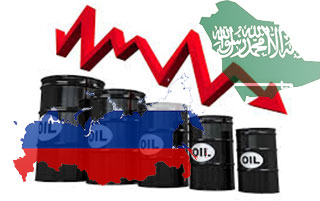Recently there have been rumors about an emerging deal between Russia and OPEC to curb oil production in order to boost the price of the battered commodity in international markets. The greatest oil glut that the world has seen in recent decades however, was powered by increased production in North America mainly. Arguably, more fuel efficient engines and more advanced technology in other energy intensive sectors have also aided the drop in demand, apart from the Chinese slowdown. This means that even if Russia and OPEC manage to strike a deal – a move that seems quite unlikely – it will take some time for the supply glut to work itself out, and even then, the future of the oil industry still looks shaky.
Enemies with a Common Source of Income
The oil glut was exacerbated by a Saudi policy of increasing production to squeeze high cost producers out of the market as much as possible. However, there is no question that the Saudis understood that the price crunch will bring severe pain to their oil rich enemies and geopolitical adversaries. Both Russia and Iran, who support Saudi rivals in the Syrian war, found themselves in the eye of the oil glut. In a global game of chicken, in which the biggest oil producers – Saudi Arabia and Russia – are not willing to budge, the intensity of the clash will probably be felt thousands of miles away from the epicenter of the crash. With both countries suffering from a severe shortage of income, victory can only be pyrrhic, and the collateral damage too great not to generate seismic changes in the way the world views the energy markets.
Whatever Goes Down, May Stay Down
Lower oil prices have also been a result of decades of Saudi Arabia and OPEC playing supply games to manipulate the price of crude. Going back to the oil shocks of the 70’s, scientists, engineers, entrepreneurs and governments invested all their efforts in bringing about the technological change needed to upset OPEC’s grip on the global economy. Government subsidized ethanol, fracking and hybrid engines among others, are some of the tools developed to counter high oil prices. China’s rapid development and increased hunger for oil over the last decade, just served to give some of these tools a boost, and now the whole system is coming full circle.
If Russia and OPEC manage to strike a deal – if anyone can imagine two sour geopolitical rivals agreeing to boost each other’s economies – as soon as the price of oil starts going up, these tools will kick in and help bring it back down. In an environment of higher oil prices, North American crude, whether it is produced by fracking or comes from the bituminous sands in Alberta, will be profitable again. Many of the rigs, drilling projects and other extractive activities that have come offline, will be restarted, and so the price will go down again. If that is not enough, car makers are moving into the electric engine era, which will be more of a threat to oil producers than the hybrid engine.
The Great Oil Blues
It seems that economies based on oil production, are facing very challenging times ahead. The oil supply glut will probably come and go in quicker than expected intervals, and price recoveries could be short lived. The whole OPEC-Russia deal, if it is at all plausible, will likely serve to push prices back up moderately and temporarily. Hopefully the emerging markets that pinned their hopes on the China-led oil boom, have an alternative plan for their future, because it is clear that these economies stand the most to lose from this geopolitical game of chicken.





